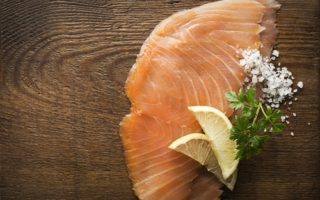
From food manufacturers advertising "no-fat products" to fad diets that cut out fats completely, there is a lot of misinformation circulating about good, bad and in-between fats. The simple truth is that fats are everywhere and extremely important for a healthy diet. Fats are a major source of energy. You also need them to build cell membranes and absorb key vitamins and minerals, according to Harvard Health.
While beneficial, the issue lies with what type of fats you consume on a regular basis because not all fats are created equally. To separate fact from fiction, the American Heart Association broke down the good, bad and ugly of fats:
The good
Monounsaturated and polyunsaturated fats come from nuts, plant-based oils, vegetables, fish and seeds. These healthy fats can lower high cholesterol levels, reduced the risk of heart disease and stock your body with essential fats it needs, but cannot make itself. Great sources of monounsaturated fats include nuts and avocados, along with olive, sunflower, peanut and olive oils. Polyunsaturated fats can be divided into omega-3 and omega-6 fatty acids, which includes walnuts, salmon, mackerel, sardines and soybean oils.
"Trans fats are the worst type of fats."
The bad
Saturated fats are the in-between, somewhat bad type of fats. As a common staple of most American's diets, they include whole milk, butter, whole-milk dairy products, red meat and commercially prepared foods. These fats can raise bad cholesterol levels and increase the risk of heart attack and strokes. However, they also can boost good cholesterol numbers. Due to mixed reviews over these fats, most nutritionists suggest limiting intake to under 10 percent of your daily calories.
The ugly
Hydrogenated oils and trans fats are the absolute worst types of fats you can consume. These dietary fats are a byproduct of the hydrogenation process, which is used to transform healthy oils into solids to keep them from spoiling. Essentially, this turns healthy vegetable oils into unhealthy fats. They are commonly listed as partially hydrogenated oils on packaging labels, yet are found in fried and processed foods, margarine and certain baked foods. They can raise bad and lower good cholesterol levels, while increasing the risk for heart attack, strokes and type 2 diabetes.
On the GAPS Diet, participants primarily eat saturated and monounsaturated animal fats, which include fresh meats, dairy fats, egg yolks and other fats rendered from meats. In her book, "Gut and Psychology Syndrome," Dr. Natasha Campbell-McBride dispels certain myths surrounding fat consumption. Natural fats are best, Campbell-McBride explains, because they support a healthy body.
For additional information about the GAPS Diet and how to get started, you can consult with a Certified GAPS Practitioner and visit our website today!

